NASA’S MAVEN MISSION REVEALS MARS HAS METAL IN ITS ATMOSPHERE
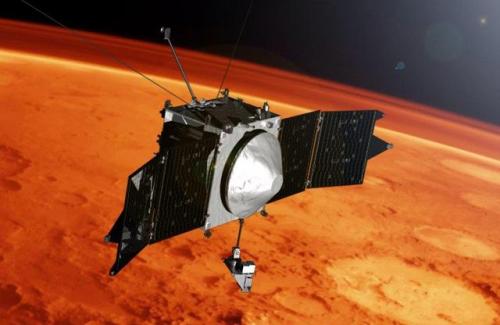
NASA’S MAVEN MISSION REVEALS MARS HAS METAL IN ITS ATMOSPHERE
Mars has electrically charged metal atoms (ions) high in its atmosphere, according to new results from NASA’s MAVEN spacecraft. The metal ions can reveal previously invisible activity in the mysterious electrically charged upper atmosphere (ionosphere) of Mars.
“MAVEN has made the first direct detection of the permanent presence of metal ions in the ionosphere of a planet other than Earth,” said Joseph Grebowsky of NASA’s Goddard Space Flight Center in Greenbelt, Maryland and lead author of a new study detailing MAVEN’s results.
“Because metallic ions have long lifetimes and are transported far from their region of origin by neutral winds and electric fields, they can be used to infer motion in the ionosphere, similar to the way we use a lofted leaf to reveal which way the wind is blowing,” Grebowsky said. The new study was published today in Geophysical Research Letters, a journal of the American Geophysical Union.
MAVEN (Mars Atmosphere and Volatile Evolution Mission) is exploring the Martian upper atmosphere to understand how the planet lost most of its air, transforming from a world that could have supported life billions of years ago into a cold desert planet today. Understanding ionospheric activity is shedding light on how the Martian atmosphere is being lost to space, according to the MAVEN team.
The metal comes from a constant rain of tiny meteoroids onto the red planet. When a high-speed meteoroid hits the Martian atmosphere, it vaporizes. Metal atoms in the vapor trail get some of their electrons torn away by other charged atoms and molecules in the ionosphere, transforming the metal atoms into electrically charged ions.
MAVEN has detected iron, magnesium, and sodium ions in the upper atmosphere of Mars over the last two years using its Neutral Gas and Ion Mass Spectrometer instrument, giving the team confidence that the metal ions are a permanent feature. “We detected metal ions associated with the close passage of Comet Siding Spring in 2014, but that was a unique event and it didn’t tell us about the long-term presence of the ions,” Grebowsky said.
The interplanetary dust that causes the meteor showers is common throughout our solar system, so it’s likely that all solar system planets and moons with substantial atmospheres have metal ions, according to the team.
Sounding rockets, radar and satellite measurements have detected metal ion layers high in the atmosphere above Earth. There’s also been indirect evidence for metal ions above other planets in our solar system. When spacecraft are exploring these worlds from orbit, sometimes their radio signals pass through the planet’s atmosphere on the way to Earth, and sometimes portions of the signal have been blocked. This has been interpreted as interference from electrons in the ionosphere, some of which are thought to be associated with metal ions. However, long-term direct detection of the metal ions by MAVEN is the first conclusive evidence that these ions exist on another planet and that they are a permanent feature there.
The team found that the metal ions behaved differently on Mars than on Earth. Earth is surrounded by a global magnetic field generated in its interior, and this magnetic field together with ionospheric winds forces the metal ions into layers. However, Mars has only local magnetic fields fossilized in certain regions of its crust, and the team only saw the layers near these areas.
“Elsewhere, the metal ion distributions are totally unlike those observed at Earth,” Grebowsky said.
The research has other applications as well. For example, it is unclear if the metal ions can affect the formation or behavior of high-altitude clouds. Also, detailed understanding of the meteoritic ions in the totally different Earth and Mars environments will be useful for better predicting consequences of interplanetary dust impacts in other yet-unexplored solar system atmospheres.
“Observing metal ions on another planet gives us something to compare and contrast with Earth to understand the ionosphere and atmospheric chemistry better,” Grebowsky said.
More Posts from Astrotidbits-blog and Others
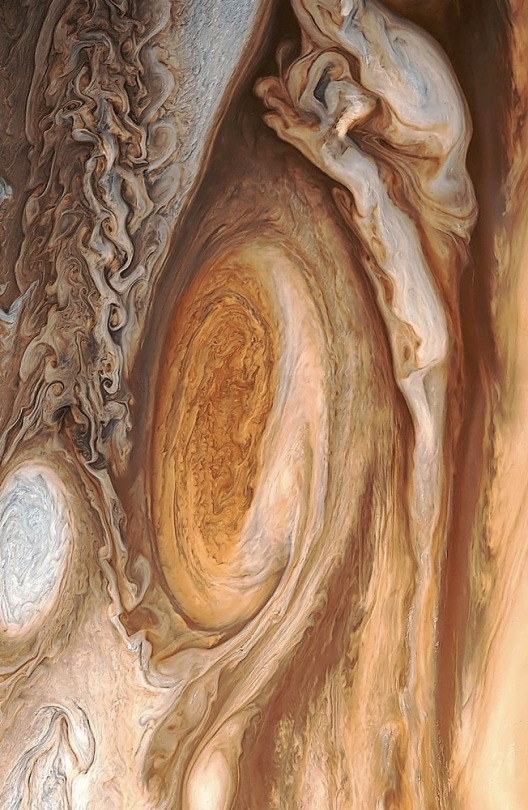
Great Red Spot of Jupiter

1705 Halley Documents Comet British astronomer Edmund Halley predicted the return of the comet that we now call Halley’s comet. He documented historic comet sightings and found patterns that led him to theorize that comets, which until then were considered baffling and even potentially dangerous because of their irregularity, actually had calculated orbits around the sun and would return periodically. He believed that the comets witnessed in 1531, 1607, and 1682 were actually the same comet and predicted it would return in 1758. Even though Halley died in 1742 the comet arrived on schedule and later became known as Halley’s Comet.
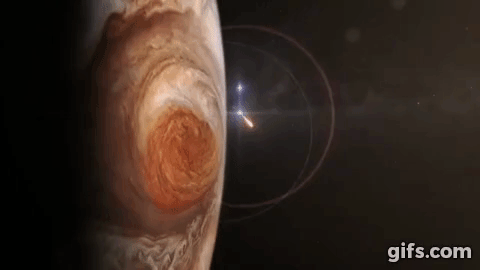
Infrared Jupiter looks hot as Juno spacecraft approaches
NASA’s mission to explore the Jovian system has almost reached its destination, and telescopes on Earth are capturing some especially fiery images of the planet to help.
Getting ready for 8/21/17
I am making a journal as I get ready for the total eclipse of the sun on 8/21/17 and you can find it on http://www.astrotidbits.com. Irregular posts as I do something new or learn new ways of doing things.
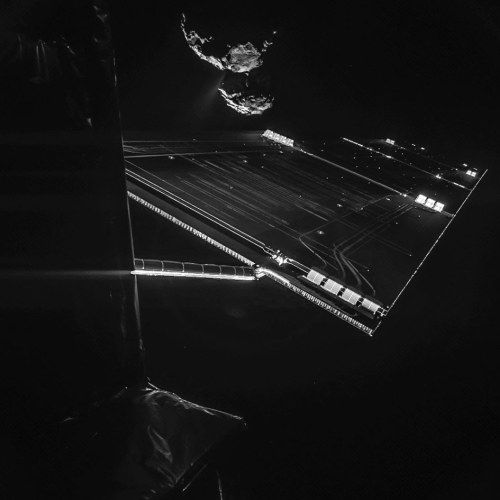
Comet 67P/C-G is framed by one of Rosetta’s solar wings, which is 46 feet long. A stream of gas and dust extends from an active area of the comet’s neck, about 10 miles away. (via NY Times)
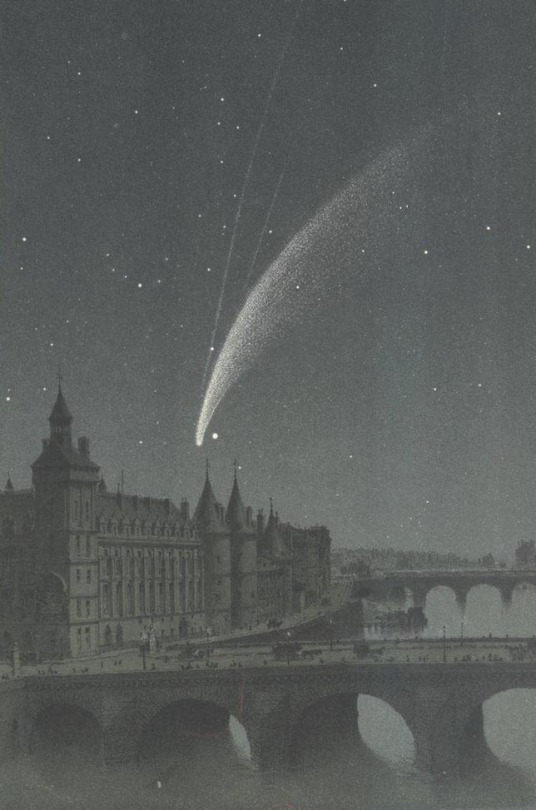
Amédée Guillemin, Les comètes (1875)

Amédée Guillemin, Les comètes (1875)

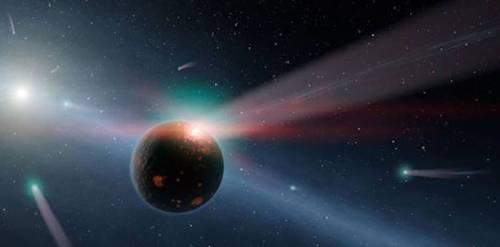

Comets may hold the secret to the origin of life on Earth
We’ve studied life on Earth extensively, but we still have no idea where it came from. Some scientists think it may have spontaneously arisen on Earth by some unknown process. Others think the ingredients for life were delivered here by comets crashing into Earth in the early days of the solar system. The latter theory just got a huge boost.
Follow @the-future-now
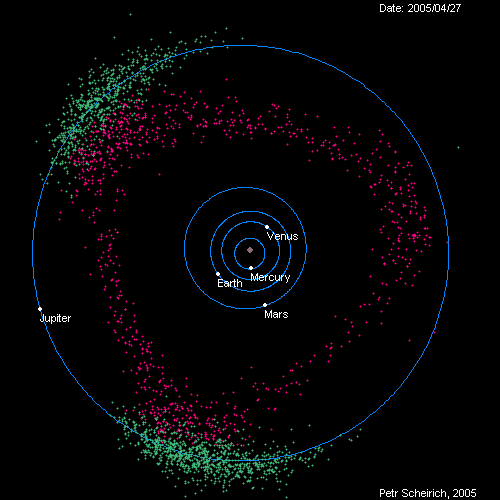
The orbit of Jupiter protects the Earth from asteroids.
-
 rainbow-butt-monkeys liked this · 8 years ago
rainbow-butt-monkeys liked this · 8 years ago -
 sarahchachaaa reblogged this · 8 years ago
sarahchachaaa reblogged this · 8 years ago -
 spn-phandom27 liked this · 8 years ago
spn-phandom27 liked this · 8 years ago -
 astrotidbits-blog reblogged this · 8 years ago
astrotidbits-blog reblogged this · 8 years ago -
 astrotidbits-blog liked this · 8 years ago
astrotidbits-blog liked this · 8 years ago -
 dsnoopyzi-blog liked this · 8 years ago
dsnoopyzi-blog liked this · 8 years ago -
 drhoz liked this · 8 years ago
drhoz liked this · 8 years ago -
 dsnoopyzi-blog reblogged this · 8 years ago
dsnoopyzi-blog reblogged this · 8 years ago -
 what-a-daringdream-blog reblogged this · 8 years ago
what-a-daringdream-blog reblogged this · 8 years ago -
 ingwae liked this · 8 years ago
ingwae liked this · 8 years ago -
 kristinainsf liked this · 8 years ago
kristinainsf liked this · 8 years ago -
 emerarudo-kyuden reblogged this · 8 years ago
emerarudo-kyuden reblogged this · 8 years ago -
 yourmung liked this · 8 years ago
yourmung liked this · 8 years ago -
 purplehaaze22 liked this · 8 years ago
purplehaaze22 liked this · 8 years ago -
 lexus4tri liked this · 8 years ago
lexus4tri liked this · 8 years ago -
 randyranks reblogged this · 8 years ago
randyranks reblogged this · 8 years ago -
 randyranks liked this · 8 years ago
randyranks liked this · 8 years ago -
 spacetimewithstuartgary reblogged this · 8 years ago
spacetimewithstuartgary reblogged this · 8 years ago